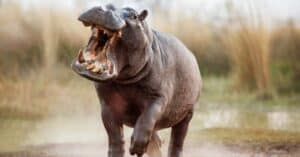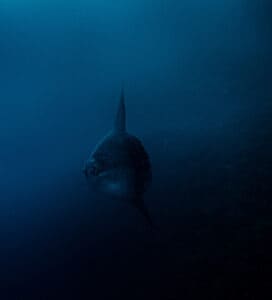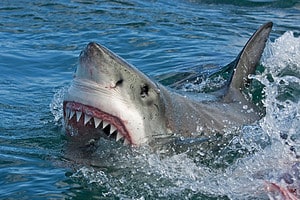The animal kingdom is full of color, thanks to a combination of biological pigments, structural color (of both the iridescent and non-iridescent kind), and luminescence. While many animals are predominantly just one or two colors, others are multicolored…and some are basically living rainbows! Here are 30 of the most colorful creatures on the planet.
1. Boeseman’s Rainbowfish (Melanotaenia boesemani)
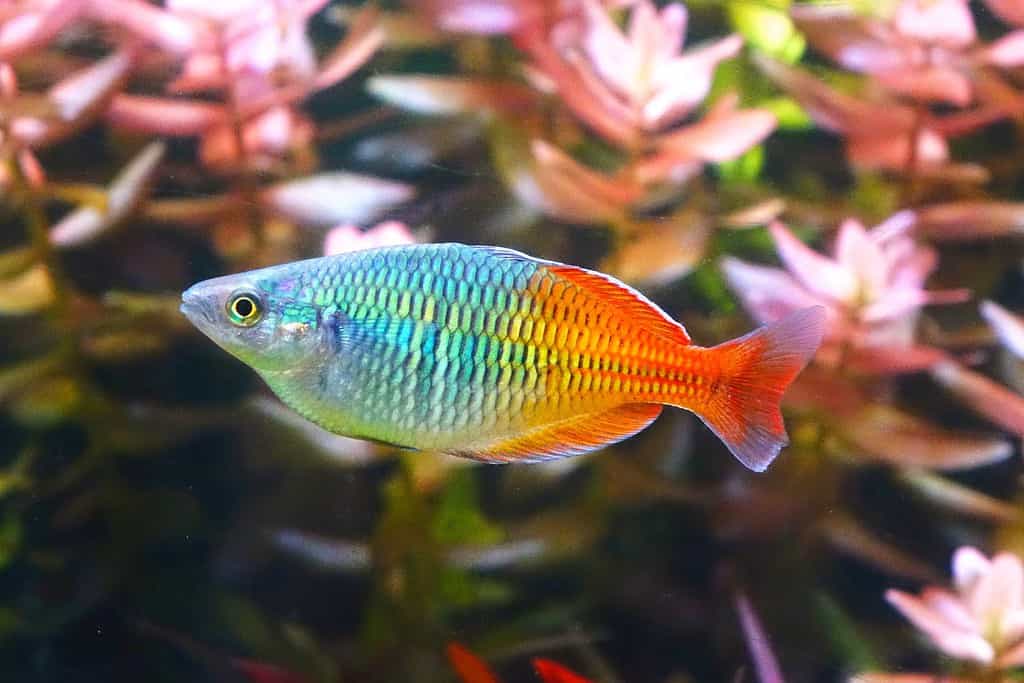
Boeseman’s rainbowfish is an endangered species in the wild.
©Mark Brandon/Shutterstock.com
The Boeseman’s rainbowfish is an iridescent freshwater rainbowfish species endemic to the Ayamaru Lakes region of West Papua, Indonesia.
2. Cameroon Dwarf Gecko (Lygodactylus conraui)
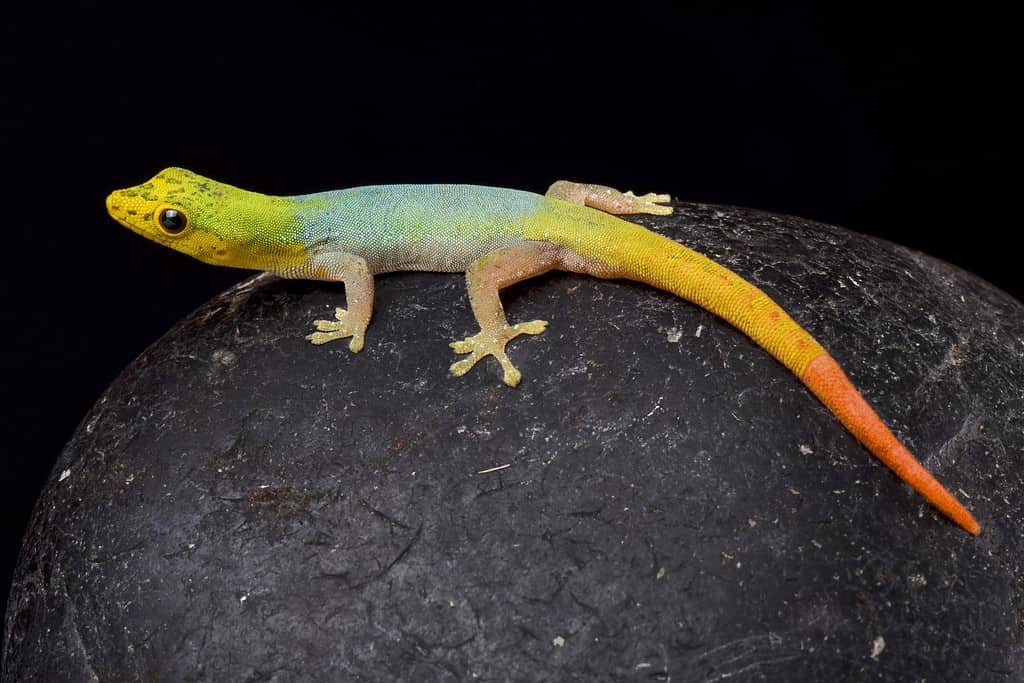
The Cameroon dwarf gecko is an arboreal and oviparous lizard.
©reptiles4all/Shutterstock.com
The Cameroon dwarf gecko is a dwarf gecko species native to West and Central Africa. Males are typically brighter than females.
3. Chyrsolina Beetles (Chrysolina spp.)
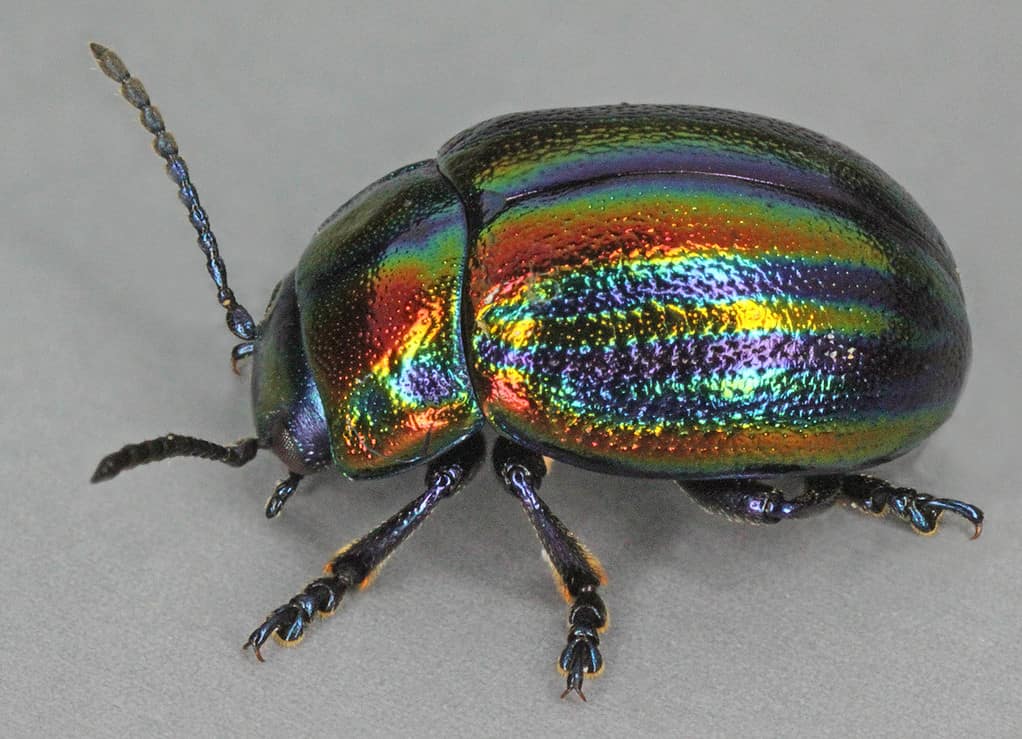
The rainbow leaf beetle, also known as the Snowdon beetle, is native to Eurasia and is a protected species in the U.K.
©Janet Graham / CC BY 2.0 - License
Chrysolina is a large leaf beetle genus with species found in Eurasia, Africa, and North America. Multiple species in this genus exhibit rainbow iridescence, including the rainbow leaf beetle (C. cerealis), rosemary beetle (C. americana), and dead-nettle leaf beetle (C. fastuosa).
4. Cuckoo Wasps (Chrysididae)

All cuckoo wasps are brood parasites.
©Sven Damerow / CC BY-SA 4.0 - License
Cuckoo wasps, also known as emerald wasps or jewel wasps, are a large family of parasitoid or kleptoparasitic wasps, with over 3000 known species worldwide. Their bodies are highly iridescent.
5. Fiery-Throated Hummingbird (Panterpe insignis)

The fiery-throated
hummingbird
is the only member of its genus, but two recognized subspecies with minor size and color variations exist.
©Ondrej Prosicky/Shutterstock.com
The fiery-throated hummingbird is a mountain gem hummingbird species native to Costa Rica and Panama. Unlike many other hummingbird species, both male and female fiery-throated hummingbirds have identical iridescent plumage.
6. Flying Peacock Spider (Maratus volans)

Male peacock spiders use their abdomen flaps and legs to perform a courtship dance to attract females.
©KDS444 / CC BY-SA 3.0 - License
The flying peacock spider is a peacock spider species native to Australia. Like other peacock spiders, it is a strongly dimorphic species, with only the males sporting the brightly colored abdomen flaps.
7. Forest Caterpillar Hunter (Calosoma sycophanta)

As their common name suggests,
caterpillar
hunters are beetles that prey on caterpillars.
©Lukas_Vejrik/Shutterstock.com
The forest caterpillar hunter is an iridescent ground beetle species native to Europe.
8. Golden Pheasant (Chrysolophus pictus)
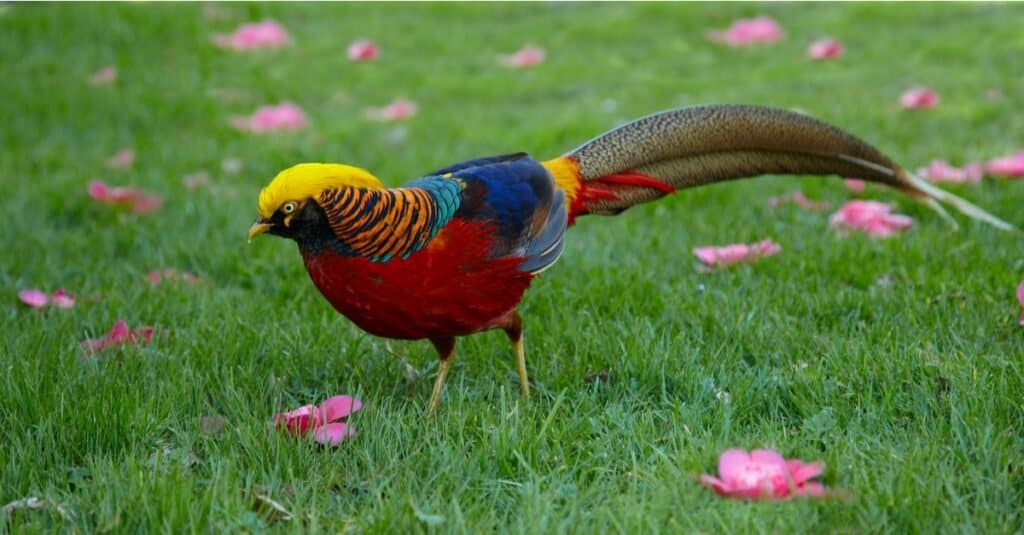
Golden pheasants are popular as ornamental birds and have been introduced widely outside their native range.
©Maksym Gorpenyuk/Shutterstock.com
The golden pheasant, also known as the Chinese pheasant or rainbow pheasant, is a gamebird species native to western China. The species is strongly dimorphic, with only the male exhibiting colorful plumage; the female is a dull mottled brown.
9. Gouldian Finch
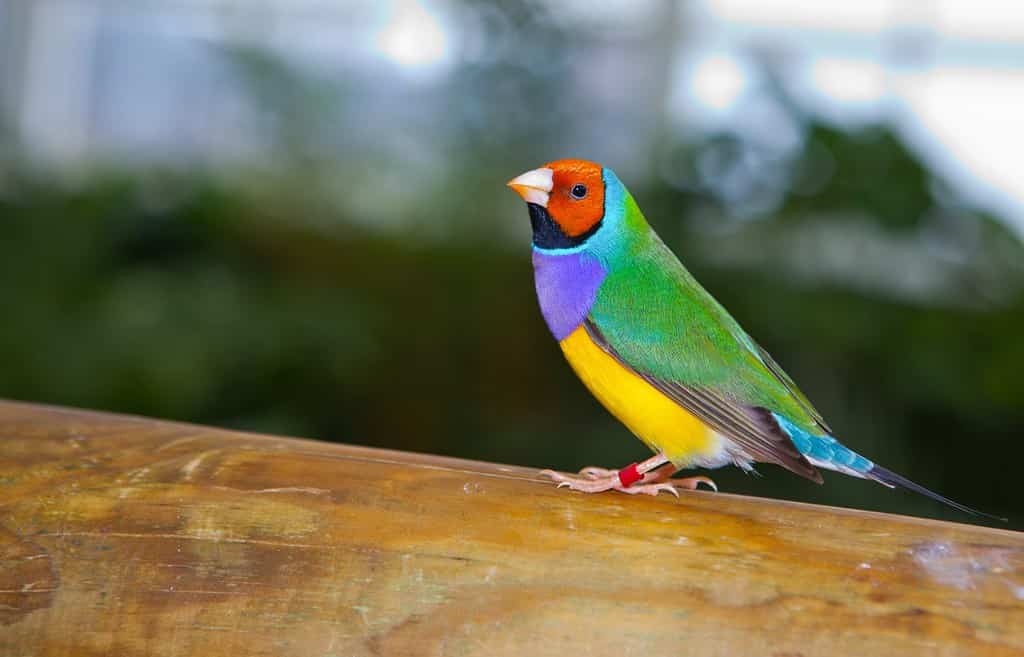
Gouldian finches nest in tree hollows.
©WH_Pics/Shutterstock.com
The Gouldian finch, also known as Gould’s finch or rainbow finch, is an estrildid finch species native to northern Australia. Wild Gouldian finches may have heads that are black, red, or yellow. It is also a dimorphic species; adult males have bright purple chest patches, while females have paler mauve ones.
10. Iridescent Tiger Beetle (Cicindela duponti)

Iridescent
tiger
beetles live in forested habitats.
©wagtail/Shutterstock.com
The iridescent tiger beetle is a tiger beetle species native to South and Southeast Asia.
11. Jewel Beetles (Buprestidae)

, a jewel beetle from Indonesia, is one of the most spectacularly colored of all the jewel beetles.
©Mark Brandon/Shutterstock.com
Jewel beetles, also known as metallic wood-boring beetles, are a huge beetle family, with over 15,000 species known worldwide. Many are stunningly iridescent and highly sought after for collections. The elytra of some species are also used in traditional Asian beetle wing jewelry.
12. Jewel Bugs (Scutelleridae)
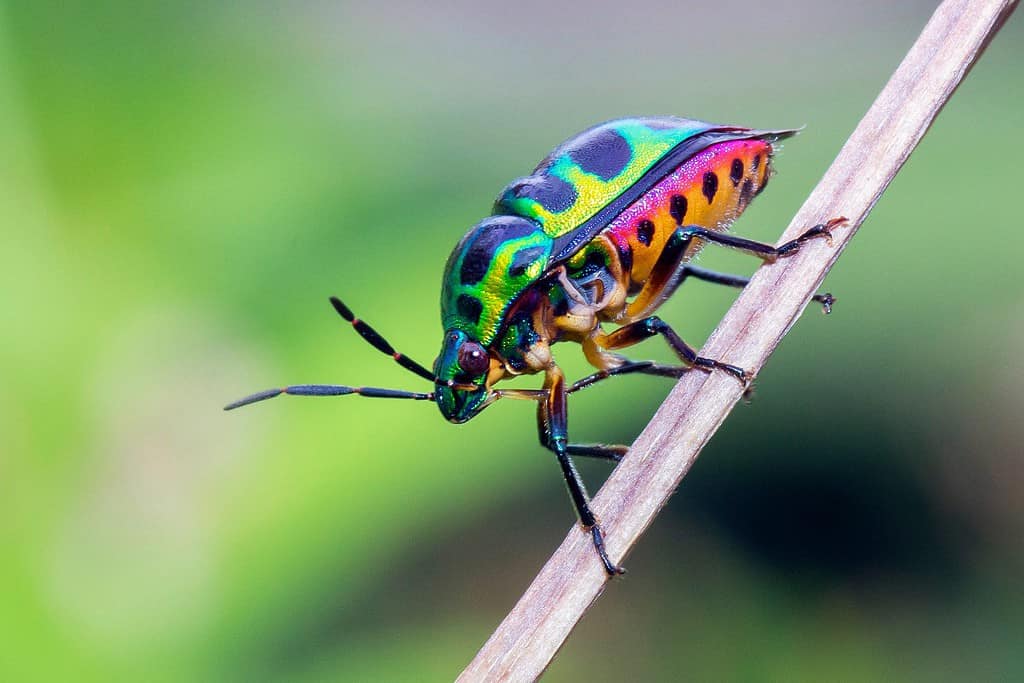
Jewel bugs are often mistaken for beetles because of their similar body shapes.
©aDam Wildlife/Shutterstock.com
The jewel bugs, also known as metallic shield bugs, are a large family of true bugs, with over 450 species known worldwide. They are often very colorful and highly iridescent.
13. Keel-Billed Toucan (Ramphastos sulfuratus)
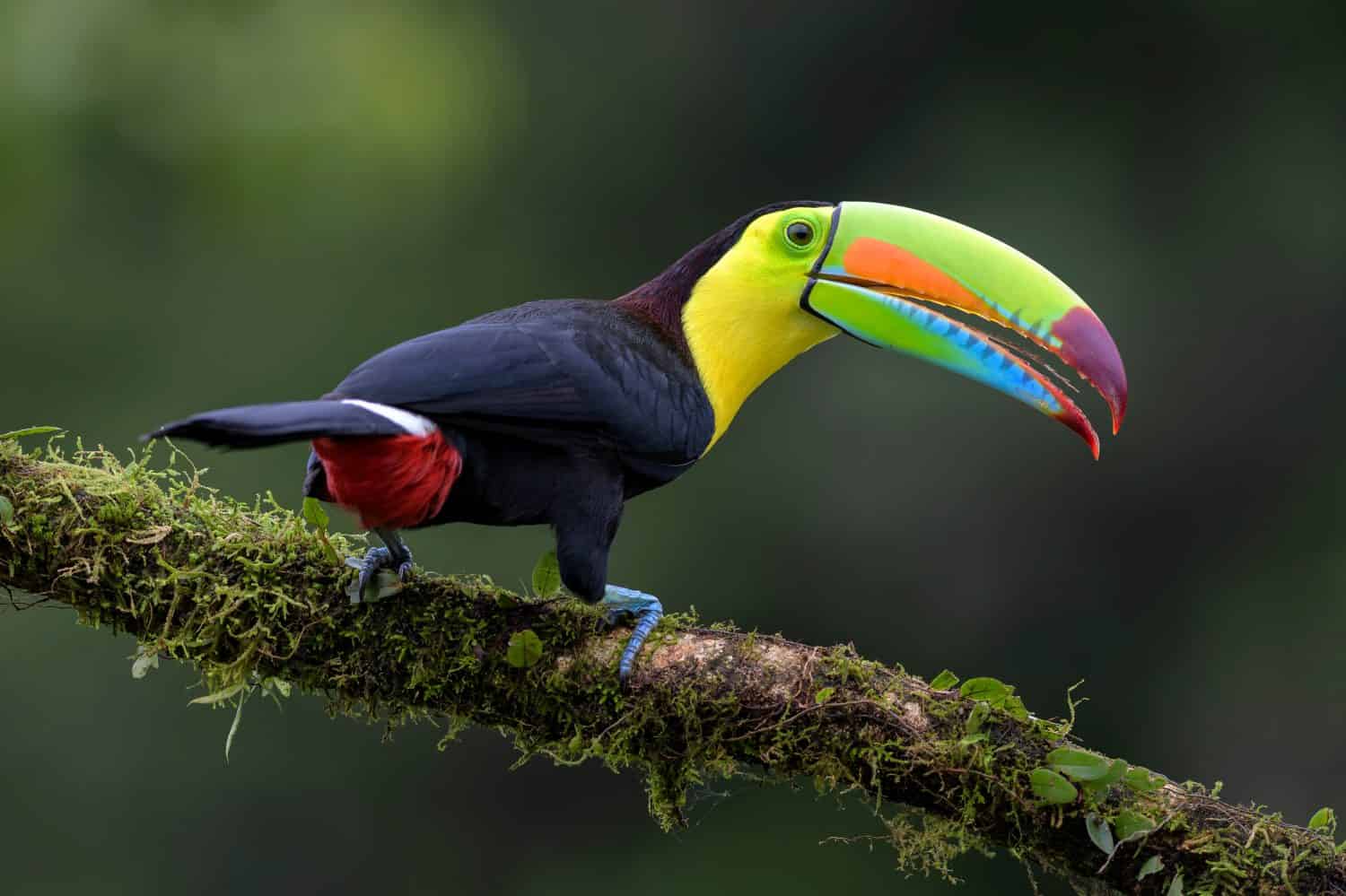
The keel-billed toucan is the national bird of Belize.
©David Havel/Shutterstock.com
The keel-billed toucan, also known as the sulfur-breasted toucan, keel toucan, or rainbow toucan, is a toucan species native to tropical forests of southern Mexico, Central America, and northwestern South America.
14. Madagascan Sunset Moth (Chrysiridia rhipheus)
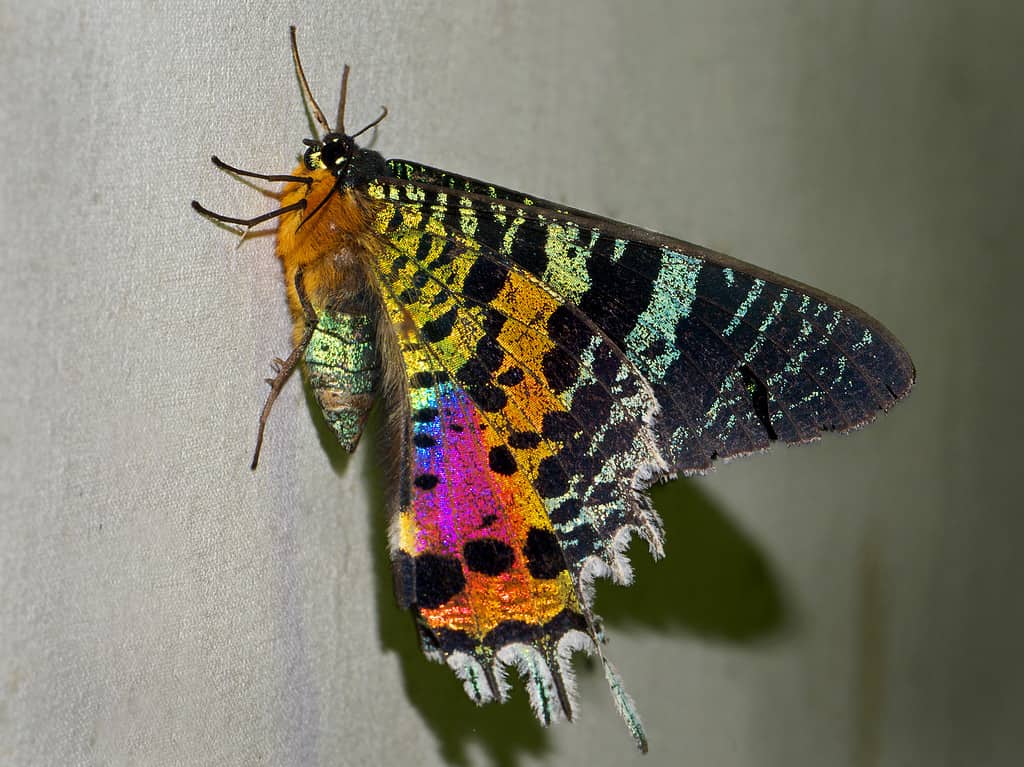
The Madagascan sunset moth is a day-flying moth.
©Frank Vassen from Brussels, Belgium / CC BY 2.0 - License
The Madagascan sunset moth is an iridescent uranild moth species endemic to Madagascar. It is often mistaken for a butterfly because of how colorful it is!
15. Mandarinfish (Synchiropus splendidus)
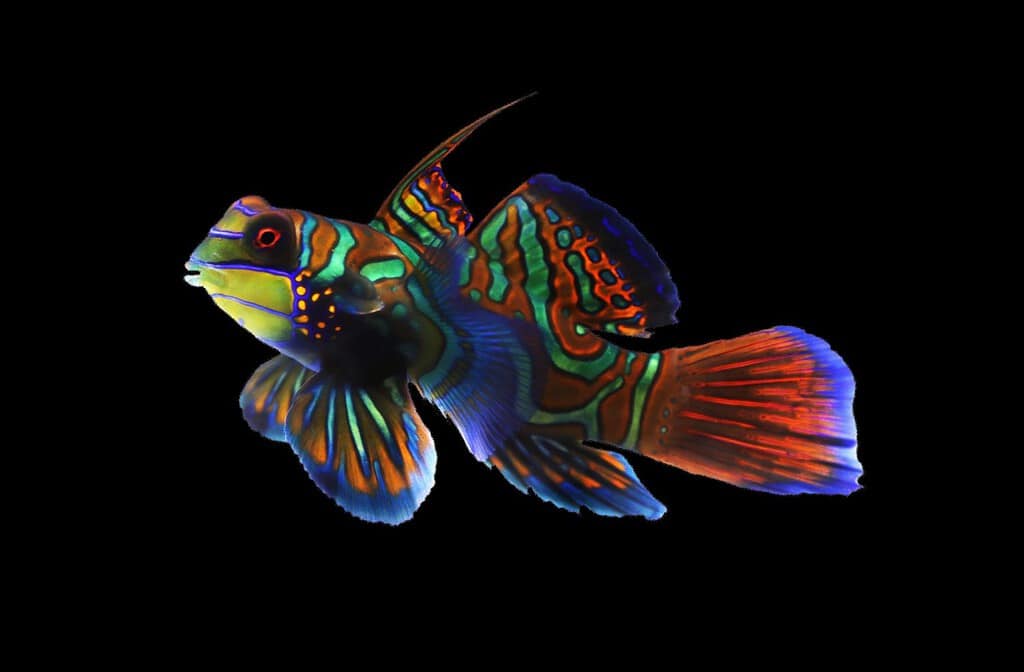
Mandarinfish are popular in the aquarium trade.
©Arunee Rodloy/Shutterstock.com
The mandarinfish, also known as the mandarin dragonet, is a dragonet species native to the western Pacific Ocean. This species and its close relative, the picturesque dragonet (Synchiropus picturatus), are the only two vertebrates known to produce a “true blue” cyanophore body pigment, rather than relying on structural color to appear blue.
16. Orange-Breasted Sunbird (Anthobaphes violacea)

The similarities between sunbirds, hummingbirds, and honeyeaters are due to convergent evolution.
©JR Gale/Shutterstock.com
The orange-breasted sunbird is a sunbird species endemic to southwestern South Africa. It is a strongly dimorphic species, with only the adult males brightly colored; females are dull olive.
17. Painted Bunting (Passerina ciris)

Painted buntings are migratory songbirds.
©Danita Delimont/Shutterstock.com
The painted bunting is a North American bunting species native to parts of the U.S., Mexico, Central America, and the Caribbean. It is a strongly dimorphic species, with only the males having bright rainbow plumage; females are a drab yellow-green.
18. Painted Grasshopper
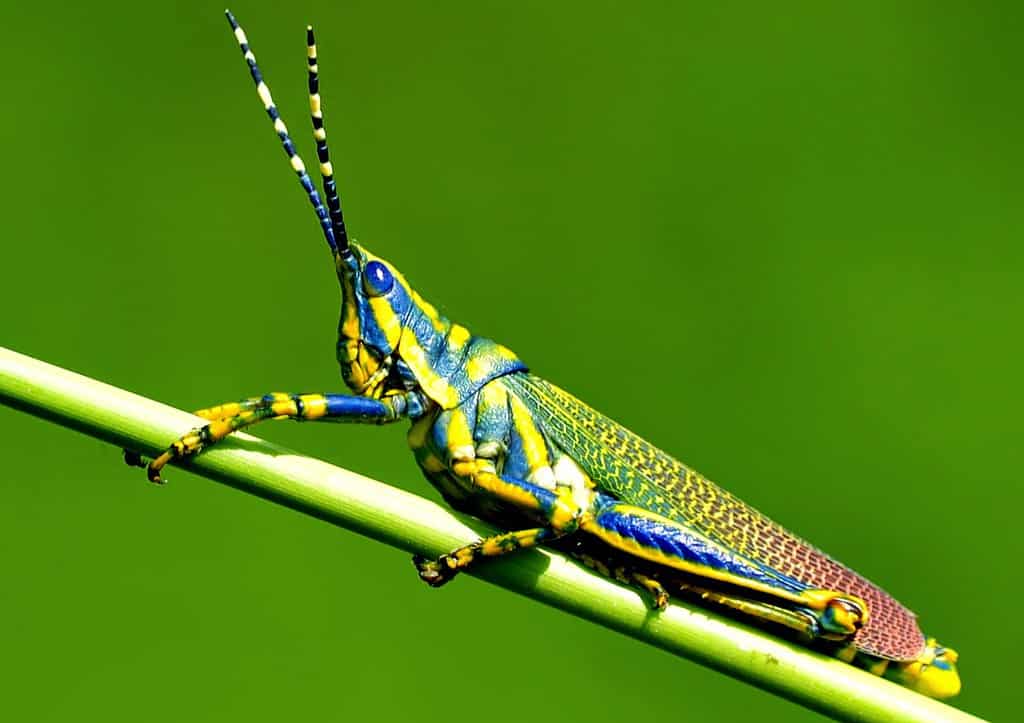
Painted grasshoppers develop their toxicity by feeding on milkweed plants.
©Kelvin Santarita / CC BY-SA 4.0 - License
The painted grasshopper, also known as the aak grasshopper or ak grasshopper, is a grasshopper species native to India, Pakistan, and Afghanistan. Their coloration is aposematic, warning of their toxicity to potential predators.
19. Panther Chameleon (Furcifer pardalis)
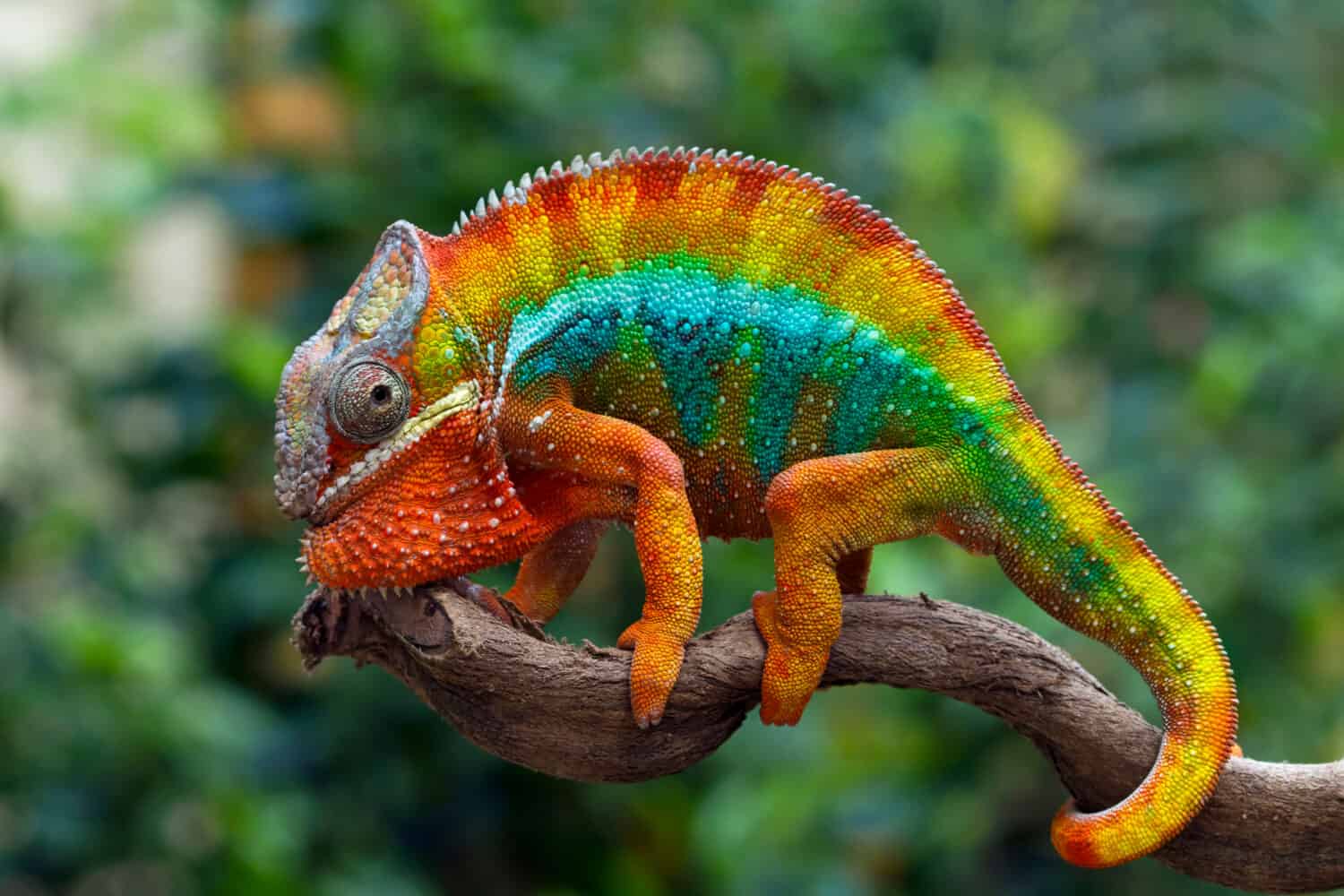
Chameleons may change color as a form of communication or as a reaction to environmental conditions.
©Kurit afshen/Shutterstock.com
The panther chameleon is a chameleon species endemic to tropical forests of Madagascar. They are renowned for being amongst the most colorful of all chameleons, especially males of the Ambilobe locale.
20. Parrotfish (Scaridae or Scarinae)
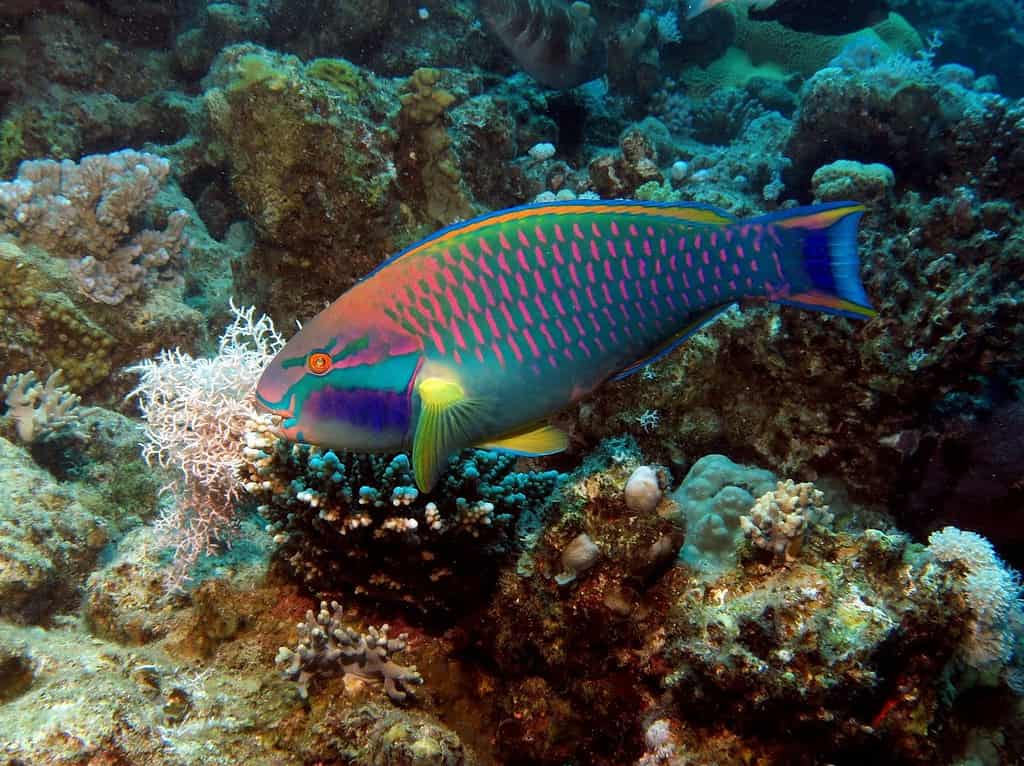
Most parrotfish are
sequential hermaphrodites
, with terminal phase males often especially colorful.
©Laura Dts/Shutterstock.com
Parrotfish are a family of marine fish, with about 100 species known in the Atlantic, Pacific, and Indian Oceans. They are closely related to wrasse (see #30 below), with recent research suggesting they may in fact be a subfamily rather than a sister family to them. Many species exhibit bright colors. Among the most noteworthy rainbowesque species are the daisy parrotfish (Chlorurus sordidus), Mediterranean parrotfish (Sparisoma cretense), Qoy’s parrotfish (Scarus quoyi), and rusty parrotfish (Scarus ferrugineus),
21. Peacock Mantis Shrimp (Odontodactylus scyllarus)
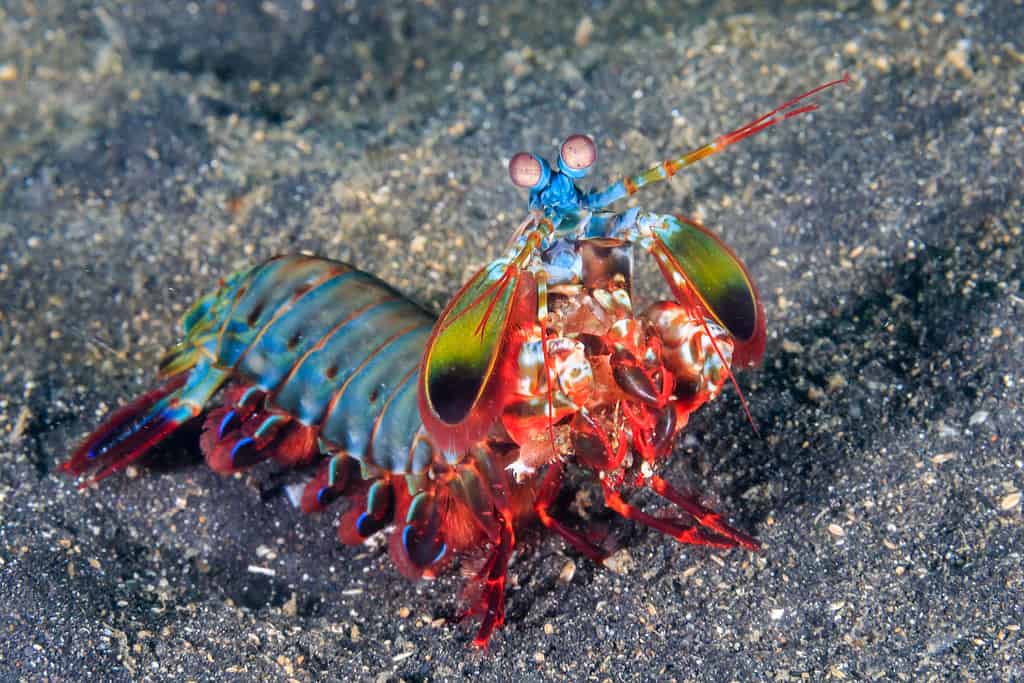
Mantis shrimp are known for both their powerful punches and superior vision.
©WhitcombeRD/iStock via Getty Images
The peacock mantis shrimp, also known as the rainbow mantis shrimp, harlequin mantis shrimp, painted mantis shrimp, or clown mantis shrimp, is a mantis shrimp species native to the Indo-Pacific.
22. Rainbow Grasshopper (Dactylotum bicolor)

Rainbow grasshoppers are herbivores.
©Matt Jeppson/Shutterstock.com
The rainbow grasshopper, also known as the painted grasshopper or barber pole grasshopper, is a short-horned grasshopper species native to North America. Its coloration is aposematic, warning potential predators of its noxiousness.
23. Rainbow Lorikeet (Trichoglossus moluccanus)
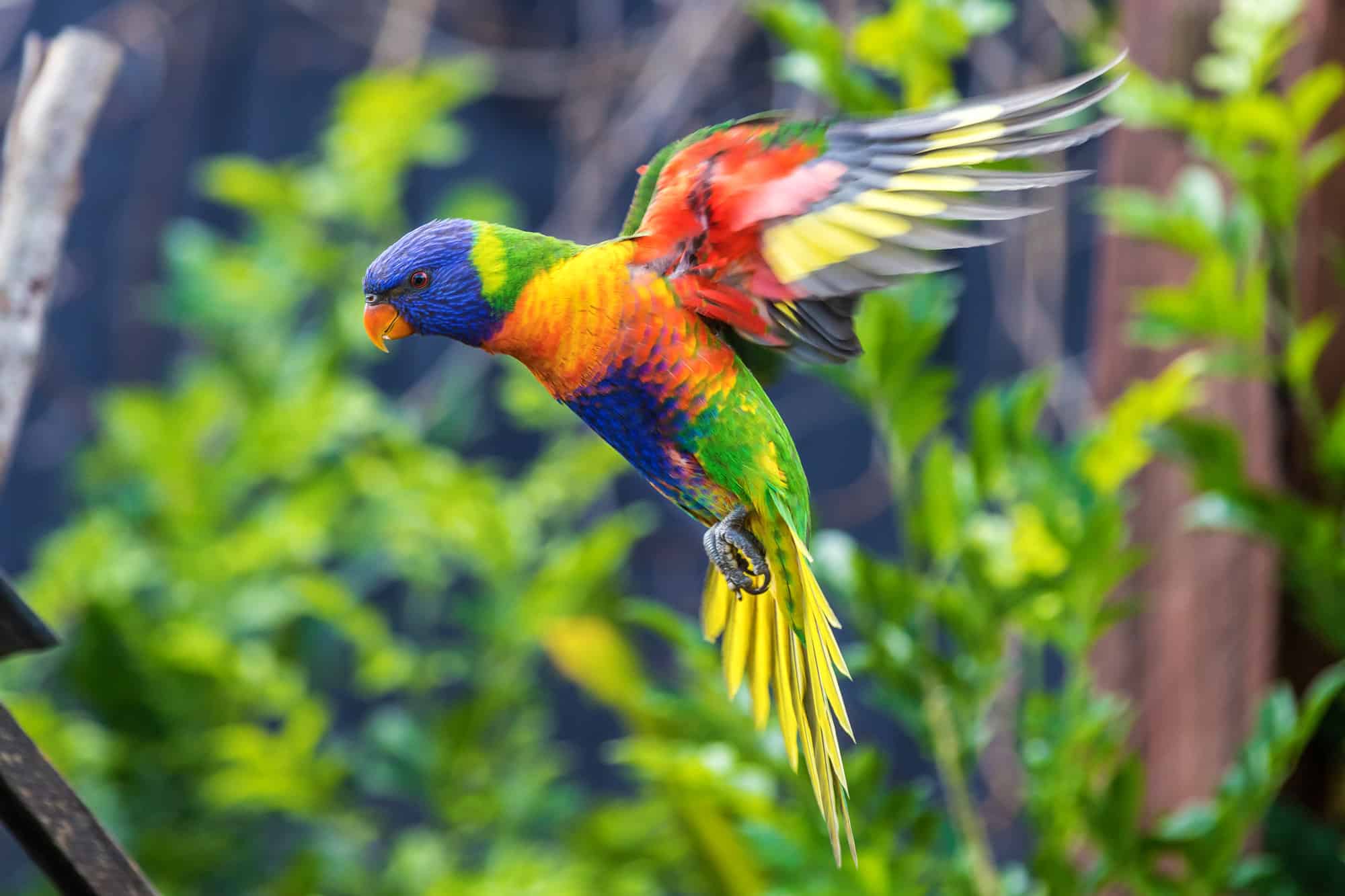
Rainbow lorikeets eat nectar, pollen, and fruit.
©Guillem Lopez Borras/Shutterstock.com
The rainbow lorikeet is a lorikeet parrot species native to Australia. Both males and females have identical rainbow-hued plumage.
24. Red-Capped Parrot (Purpureicephalus spurius)
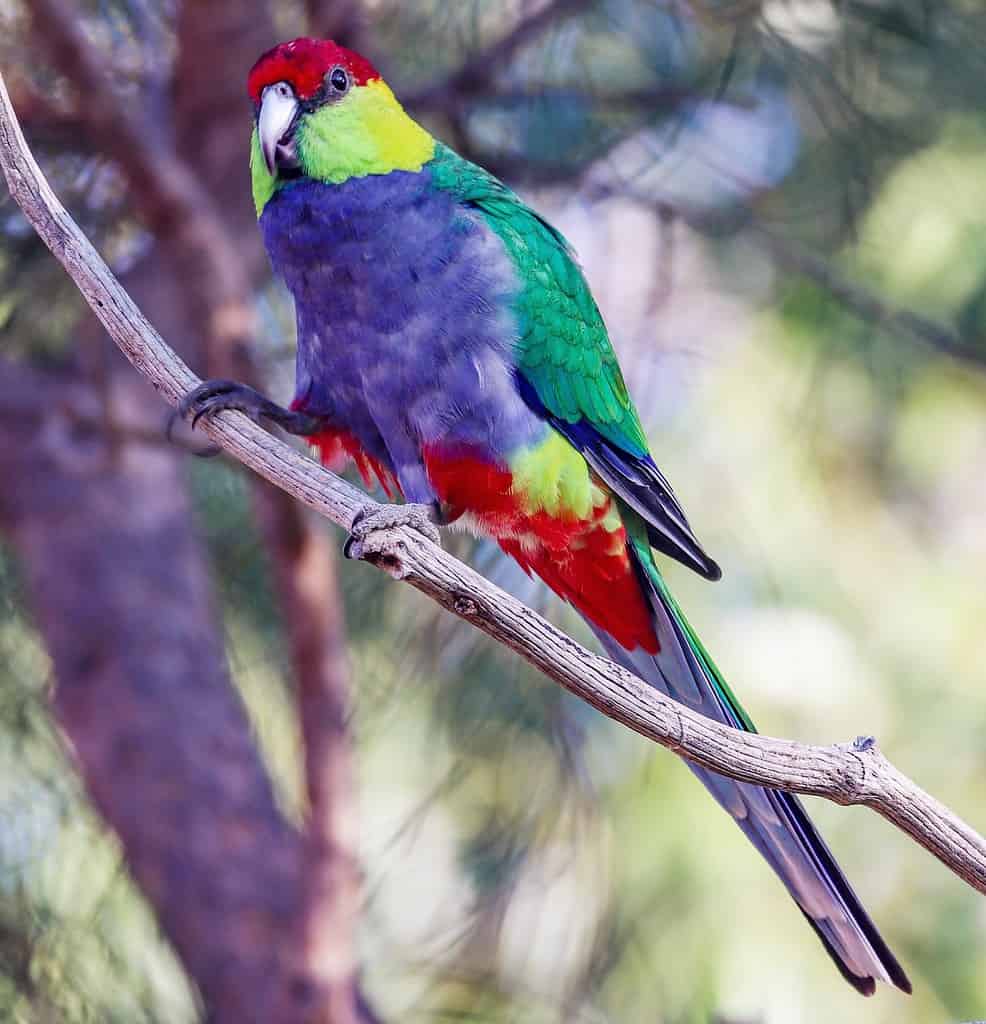
Red-capped parrots are seed eaters and are especially fond of marri seeds.
©Leanne Irwin/Shutterstock.com
The red-capped parrot is a broad-tailed parrot species native to southwestern Australia. It is a weakly dimorphic species, with females slightly duller overall and with other minor plumage differences.
25. Red-Eyed Tree Frog (Agalychnis callidryas)
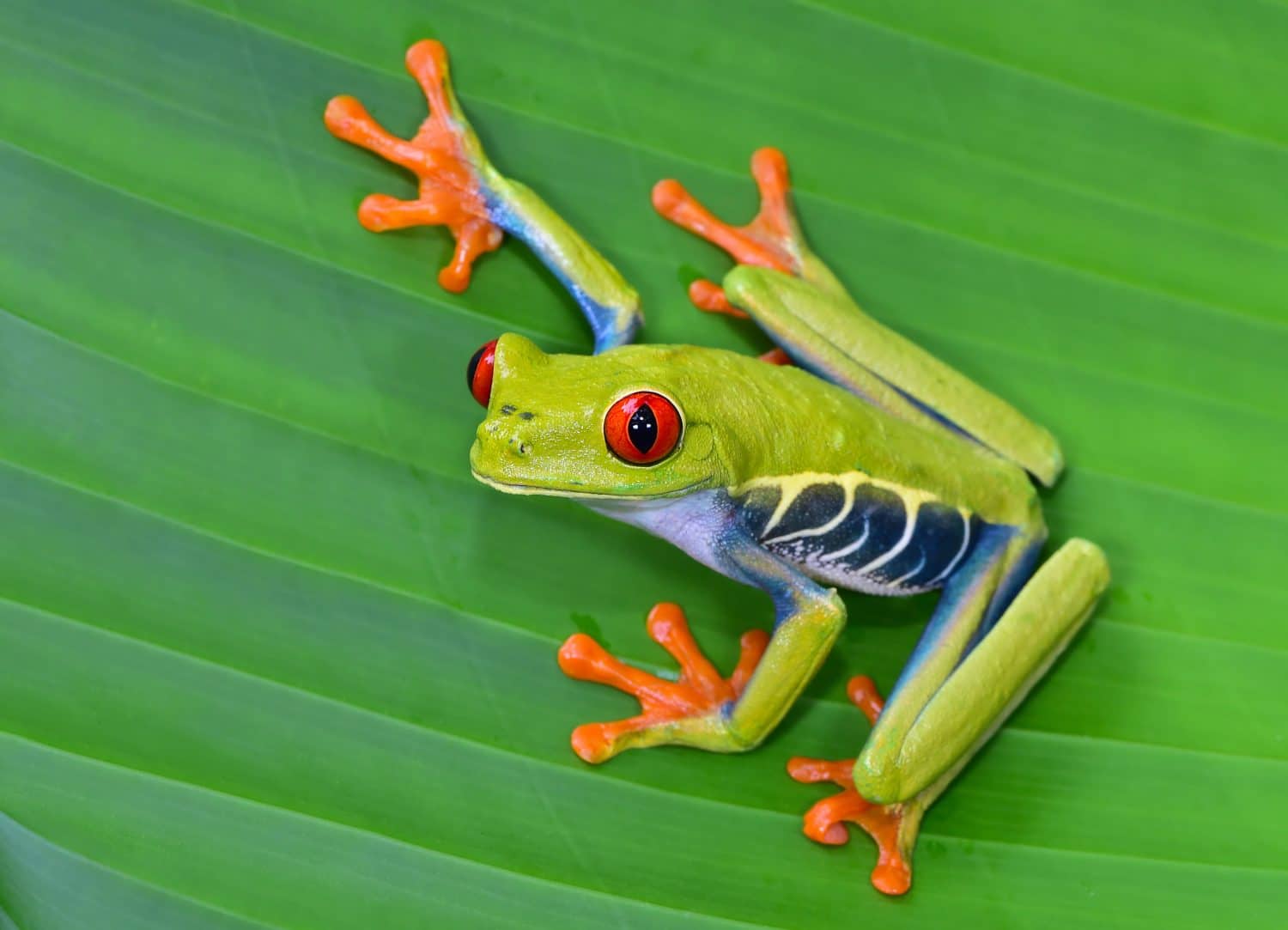
Red-eyed tree frogs use ponds for mating and reproduction.
©worldswildlifewonders/Shutterstock.com
The red-eyed tree frog is a tree frog species native to Central America and northwestern South America. Its colors are not aposematic; it is not a toxic species. Rather, the green helps with camouflage, and the bright red eyes and other colored parts of its body are used as flash coloration to startle predators.
26. Sally Lightfoot Crab (Grapsus grapsus)

Sally lightfoot crabs live on rocky shorelines.
©Don Mammoser/Shutterstock.com
The Sally lightfoot crab, also known as the red rock crab, is a lightfoot crab species native to coastal areas and nearby islands of Mexico, Central America, and South America.
27. Scarlet-Chested Parrot (Neophema splendida)
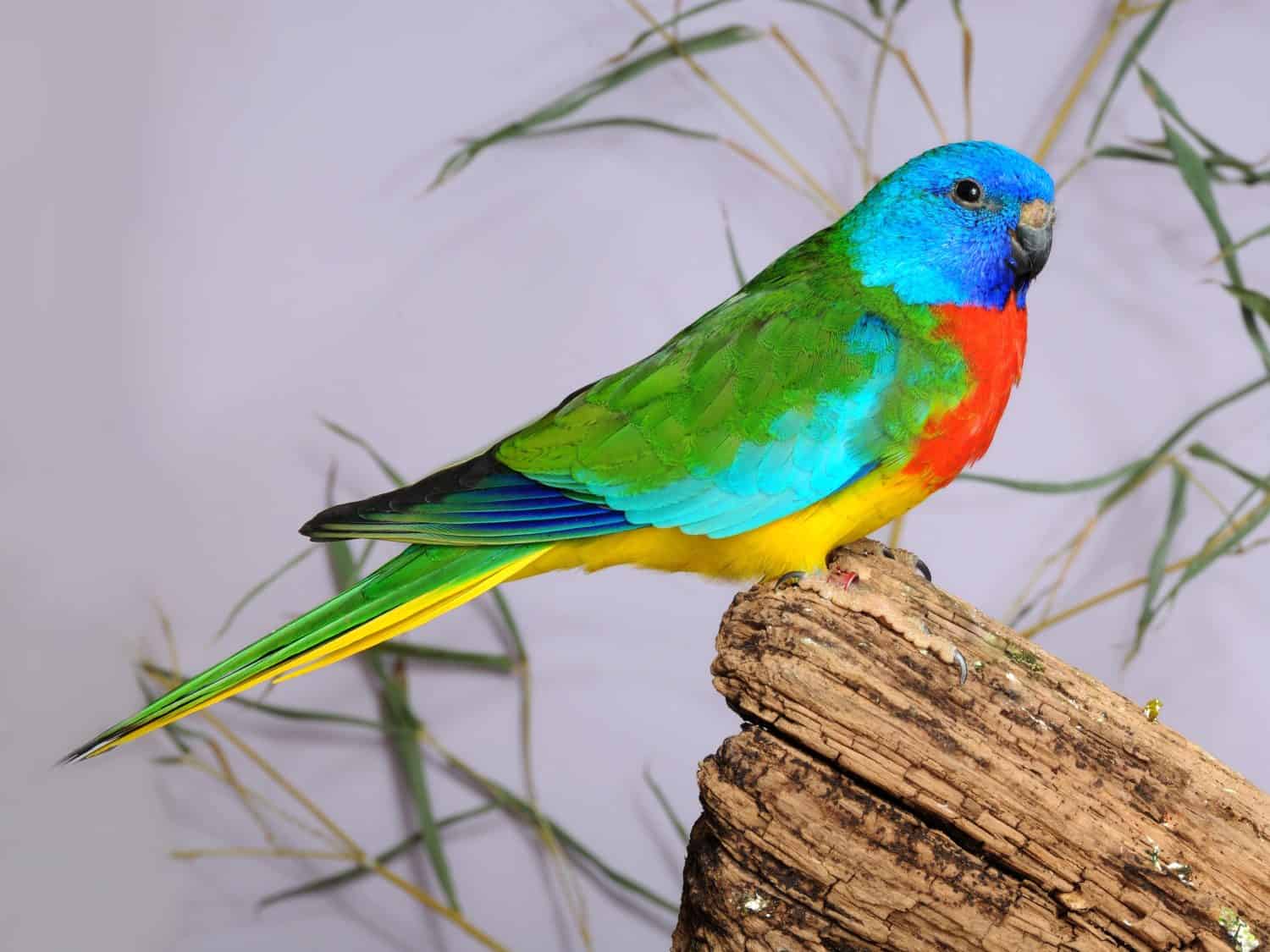
Scarlet-chested parrots feed on grass seeds.
©Eckhard Lietzow/Shutterstock.com
The scarlet-chested parrot, also known as the scarlet-breasted parrot, orange-throated parrot, or splendid parrot, is a grass parrot species native to Australia. It is a dimorphic species, with males more brightly colored.
28. Scarlet Macaw (Ara macao)
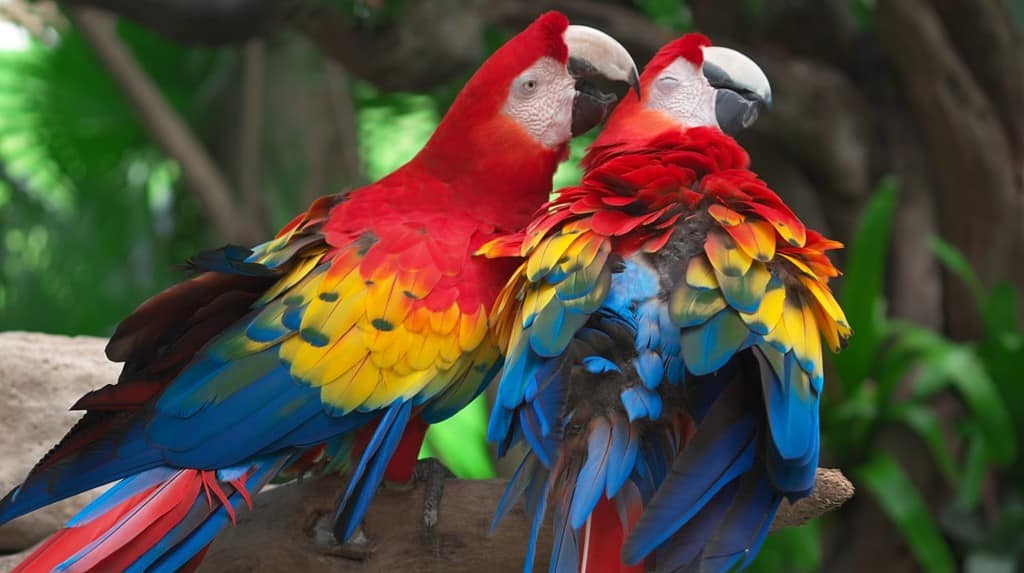
Scarlet macaws form monogamous pairbonds.
©Aesthetic.17/Shutterstock.com
The scarlet macaw is a macaw parrot species native to the Neotropical Americas. Both males and females have identical rainbow-colored plumage.
29. Sun Conure (Aratinga solstitialis)

The sun conure is an endangered species in the wild.
©luck luckyfarm/Shutterstock.com
The sun conure, also known as the sun parakeet, is a conure parrot species native to northeastern South America.
30. Wrasse (Labridae)
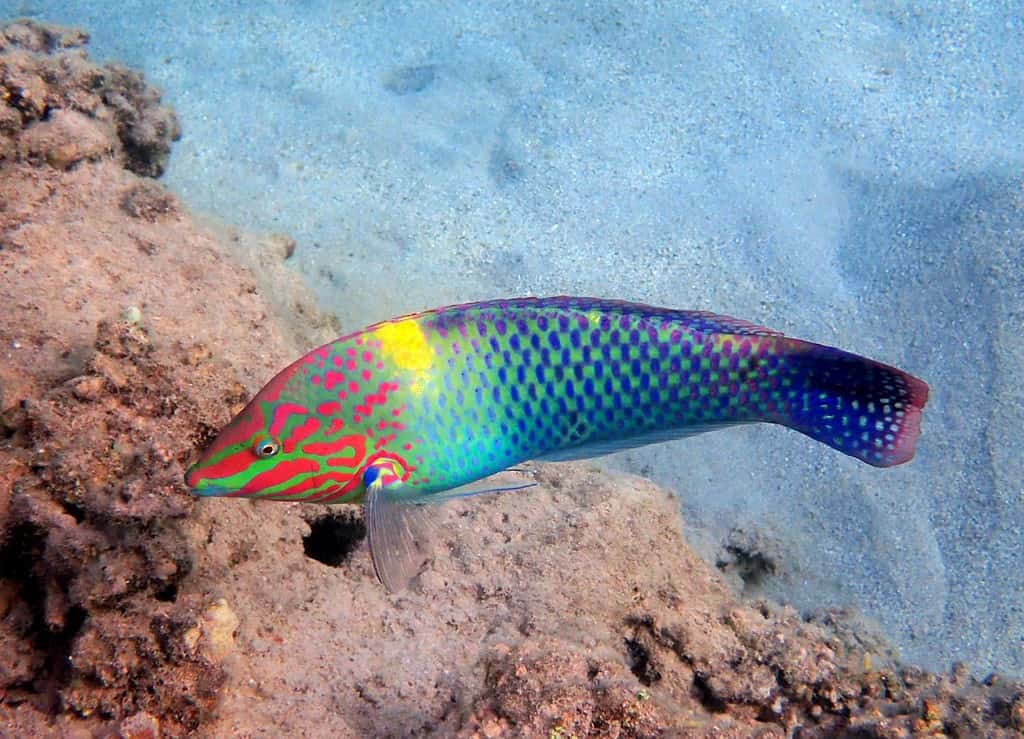
Like their close relatives, the parrotfish, most wrasse species are sequential hermaphrodites, with terminal phase males often the most brightly colored.
©MWFP84/Shutterstock.com
The wrasse are a large family of marine fish, with over 600 species known in the Atlantic, Pacific, and Indian Oceans. Many exhibit bright colors. Among the most splendidly multicolored are the checkerboard wrasse (Halichoeres hortulanus, pictured above), Cortez rainbow wrasse (Thalassoma lucasanum), and ornate wrasse (Thalassoma pavo), and zigzag wrasse (Halichoeres scapularis).
The photo featured at the top of this post is © Super Prin/Shutterstock.com
Thank you for reading! Have some feedback for us? Contact the AZ Animals editorial team.




